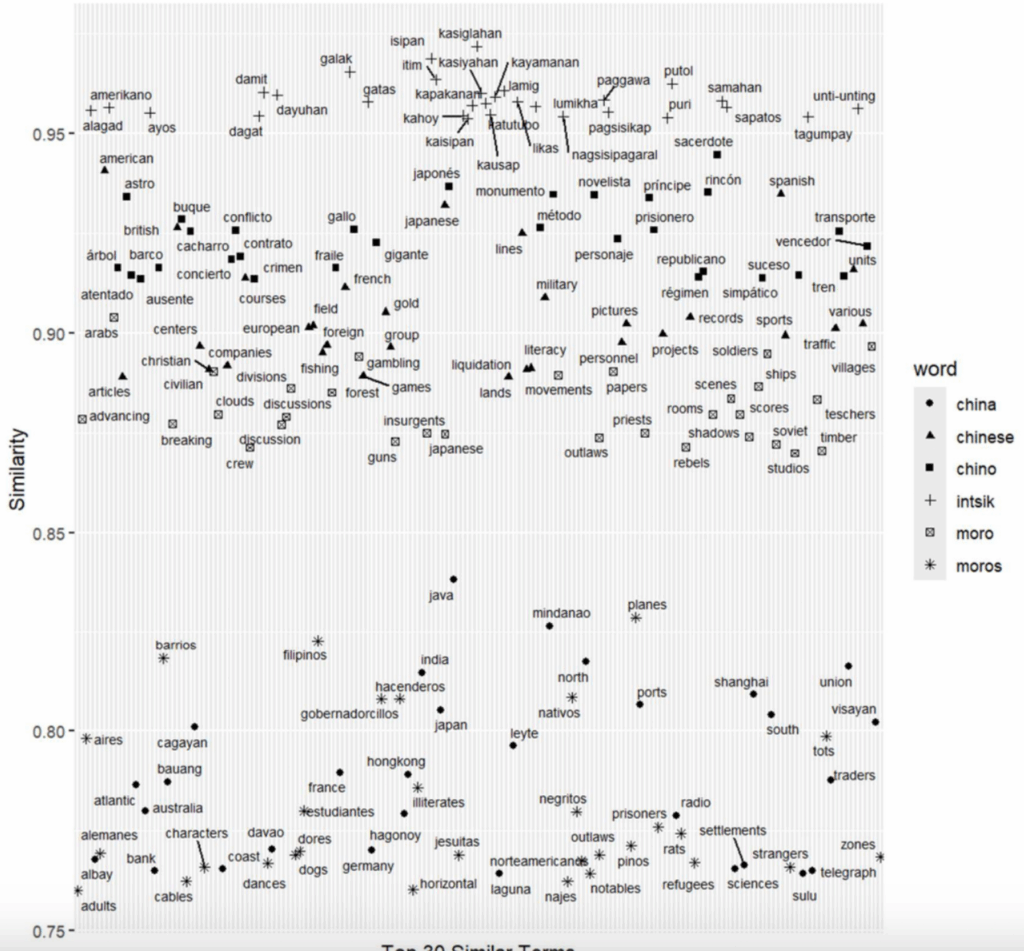Media representations of the minority groups of Moros and Chinese served colonial goals
02 Sep 2025

Nation-building remains an important post-colonial project in the Philippines, as evidenced by the continued relevance of the mandatory Rizal courses, as well as policies and public initiatives aimed at strengthening national pride across diverse cultural and religious groups. This article traces the historical developments of inclusion and exclusion from the concepts of ‘nation’ and ‘being’ Filipino based on media representations of minority groups, in particular, Moros and Chinese.
To achieve this, the study employs quantitative text analysis on a digitized corpus of multilingual periodicals from the Spanish colonial era, the American colonial era, and the first three decades of independence. It shows how a history of social categories and their respective associations often benefits colonial interests and underlie the drive towards the more inclusive narratives of the late 20th Century. The enduring divisive impact of these historical representations requires appropriate attention and reflection in cultural production, the pursuit of greater social cohesion and more inclusive, pluralistic nation-building.
This work provides a thematic and methodological example of the possibilities of doing multidisciplinary work in the humanities and social sciences using digitized archives and quantitative text analytical methods. Methodologically, it employs such methods on a multilingual corpus comprising rare periodicals from the University of the Philippine’s main library (https://repository.mainlib.upd.edu.ph/periodical.php). Besides providing quantitative insights to support existing qualitative work and close readings of historical periodicals, this method also allows the visualization of similarities and differences of corpora divided by both time and language.
Thematically, it interrogates the history of exclusivist articulations of the nation, or what comprises the ‘Filipino people’, with special attention paid to minorities, particularly, Moros and Chinese. By tracing the semantic associations through both the Spanish and American colonial periods and the first three decades of independence, covering nearly a century’s worth of periodicals, the study shows how the representations of minorities aligned with colonial forms of social organization and were often utilized in support of colonial objectives, such as the elimination of threats to economic or political dominance. Minority identities were also associated with particular sets of negative characteristics that distinguished them from each other and non-minority groups.
Additionally, the article looks at variances between articles in different languages, which show both imbalances in the frequency of the terms Moros and Chinese, differing word associations, as well as a close relationship with the respective colonial periods in which languages such as Spanish and English proliferated.
Ultimately, the article offers insights into how the more inclusive rhetoric of national unity and social cohesion of the late 20th century contrasted with the continuity of colonially instated representations in media, which requires particular attention for nation-building policies to bear fruit.
Authors: Frances Antoinette Cruz (Department of Literature, Faculty of Arts, University of Antwerp; Department of Conflict and Development Studies, Faculty of Political and Social Sciences, Ghent University, Sint-Pietersnieuwstraat 41, 9000 Ghent, Belgium; Department of European Languages, College of Arts and Letters, University of the Philippines Diliman) and Rocío Ortuño Casanova (UNED, Madrid, Spain)
Read the full paper: https://englishkyoto-seas.org/2024/12/vol-13-no-3-frances-antoinette-cruz-and-rocio-ortuno-casanova/
